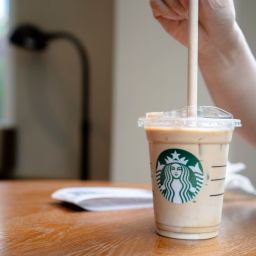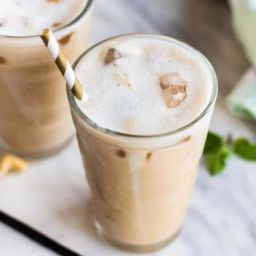
Ever found yourself scratching your head over how much coffee to use for 12 cups? You’re not alone. Getting that coffee-to-water ratio just right is essential for a perfect brew, especially when you’re making a large batch. Whether it’s for a family breakfast, an office meeting, or just because you really love coffee, mastering the art of brewing 12 cups can elevate your coffee game. So, let’s dive into the art and science of brewing the ideal pot of coffee, ensuring every cup is as delightful as the last.
Key Takeaways
- Golden Ratio Matters: Aim for the golden ratio of coffee to water. While the exact ratio can vary based on personal taste, a general guideline is about 1 to 2 tablespoons of coffee per 6 ounces of water. This translates to roughly 12-24 tablespoons for 12 cups.
- Bean Type and Grind: Choose your beans wisely. Arabica beans are known for their smooth flavor, while Robusta beans pack a punch with higher caffeine content. The grind size is also crucial – too fine, and you may get a bitter brew; too coarse, and your coffee might taste weak.
- Brewing Method: Your brewing method affects the taste. Drip coffee makers, French presses, and espresso machines all require different coffee-to-water ratios and grind sizes for optimal flavor.
- Water Temperature: Don’t overlook the importance of water temperature. Ideally, it should be between 195°F and 205°F to extract the full flavor without bitterness.
- Freshness is Key: Use freshly ground coffee if possible. Coffee starts losing its flavor soon after grinding, so fresh grounds can make a significant difference in taste.
- Experiment and Adjust: Don’t be afraid to tweak the ratios, grind size, or brewing method to suit your taste. Coffee brewing is as much an art as it is a science, so find what works best for you and your coffee companions.
The Golden Ratio Explained
The “Golden Ratio” in coffee brewing is a trusted guideline to balance coffee strength and flavor. Typically, it’s 1 to 2 tablespoons of coffee per 6 ounces of water, translating to about 12-24 tablespoons for 12 cups. This ratio ensures that your coffee is neither too strong nor too weak, providing a solid starting point for newcomers and seasoned brewers alike. But remember, it’s more of a guideline than a strict rule – feel free to adjust to your taste.
Adjusting Ratios for Taste Preferences
Not everyone likes their coffee the same way. Some prefer it bold and robust, others light and mild. That’s where adjusting your coffee-to-water ratio comes into play. If you find the golden ratio too weak, add more coffee. Too strong? Use less. It’s all about finding that sweet spot that suits your palate. Experimentation is key, and don’t be afraid to tweak the ratio until you find your perfect brew.
Coffee Ratios for Different Brewing Methods
Different brewing methods call for different coffee-to-water ratios. For instance, a French press might use a coarser grind and a different ratio compared to a drip brewer. Espresso requires a much finer grind and less water for its concentrated punch. Understanding the nuances of each brewing method can significantly impact the quality of your coffee, so it’s worth exploring and adjusting ratios based on the method you’re using.
Types of Coffee Beans and Their Impact on Flavor
Coffee beans are not all created equal. Arabica beans are known for their smooth, nuanced flavors, while Robusta beans offer a stronger, more bitter taste. The choice of bean can drastically influence the taste of your coffee, so consider what flavor profile you enjoy and choose your beans accordingly.
Importance of Grind Size
Grind size matters – a lot. A fine grind is ideal for espresso, medium for drip, and coarse for French press. The wrong grind size can lead to over or under-extraction, affecting the taste and quality of your brew. Always match your grind size to your brewing method to ensure the best possible cup of coffee.
Roast Levels and Their Influence
Roast levels play a crucial role in defining your coffee’s flavor profile. Light roasts retain more of the bean’s original characteristics, while dark roasts offer a bolder, more intense flavor. Medium roasts strike a balance, offering a bit of both worlds. Choose a roast level that aligns with your taste preferences and be prepared for it to significantly influence the final taste of your coffee.
Brewing Methods and Their Impact
The brewing method you choose can significantly affect the taste and strength of your coffee. Here’s a quick rundown:
- Drip Coffee: The most common household method, using a drip coffee maker provides a balanced and straightforward brew. It’s consistent and great for making multiple cups at once.
- French Press: This method allows for more oil and fine particles to remain in the brew, resulting in a richer, fuller-bodied coffee. It’s a bit more hands-on but worth the effort for the flavor it delivers.
- Espresso: A concentrated shot of coffee, espresso is made by forcing a small amount of hot water through finely ground coffee. It’s the base for many coffee drinks and packs a flavor punch.
Practical Tips for Consistent Brewing
Consistency is key in coffee brewing. Here are some tips to ensure your 12 cups are consistently great:
- Water Temperature: Aim for water between 195°F and 205°F. Too hot or too cold, and your coffee won’t extract properly, leading to a less than stellar cup.
- Freshness: Use freshly ground coffee if you can. Coffee begins to lose its flavor just minutes after grinding, so grinding just before brewing can make a big difference.
- Measure: Stick to the golden ratio or adjust according to your taste, but be consistent with your measurements. This helps ensure each pot of coffee is as good as the last.
- Clean Your Equipment: Regularly cleaning your coffee maker or espresso machine will prevent old coffee oils from affecting your brew’s taste.
FAQs
Q: How much coffee do I need for 12 cups?
A: Typically, you’ll need about 12 to 24 tablespoons of coffee for 12 cups, depending on how strong you like your brew. The golden ratio is a great starting point, but don’t hesitate to adjust to your taste.
Q: Can I use any coffee grind size for brewing 12 cups?
A: Grind size should be chosen based on the brewing method. A medium grind works well for drip coffee makers, a coarse grind is ideal for French presses, and a fine grind is best for espresso machines.
Q: Does the type of water matter when brewing coffee?
A: Yes, using filtered or bottled water can improve the taste of your coffee, as tap water can sometimes contain flavors that affect the overall taste of your brew.
Q: How can I make my coffee stronger or weaker?
A: Adjust the coffee-to-water ratio. More coffee will result in a stronger brew, while more water will make it weaker. Experiment to find your perfect balance.
Q: Is it important to use fresh coffee beans?
A: Absolutely. Fresh beans will produce the best flavor. Try to use beans that have been roasted within the past two weeks for optimal taste.
Final Thoughts
Brewing the perfect 12 cups of coffee is an art that combines precision with personal preference. Remember, the golden ratio is your friend but don’t be afraid to deviate to satisfy your taste buds. The grind size, water temperature, and freshness of your coffee beans play crucial roles in the final outcome of your brew. Whether you’re a fan of drip coffee, French press, or espresso, understanding these factors will help you achieve a consistently delicious pot of coffee. So, grab your favorite beans, fine-tune those ratios, and enjoy the wonderful world of coffee brewing.









